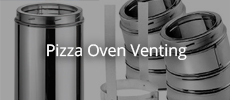X
-
It worked well
I had to double the chicken wire up and it locked in well with the nut. I was careful when drilling( with regular drill and a mason bit) to not puncture or damage the insulation.
I t went it pretty snugly with a few taps.
I left some room for the scratch coat and finish coat. I may have to make the brown coat a slight bit thinner at very top, around the nut. so that i can put the finish stucco layer on.
I was unaware that the first shell was over and inch thick. I thought i was trying to keep it pretty thin ( about 3/4" thick ) but i guess i laid it on a bit thicker than I planned for first round.
This wont hurt anything I believe?
I also attached the front brick work for the hearth.
I am going to lay a 1 inch thick piece of soap stone over with refractory mortar. then brick another arch over the rough cut firebrick.
Thank you so much for the Breather suggestion. I can see it helping a ton with curing and not causing further damage to the oven.
after the hearth and arch and vent and 2 more stucco layers.. she will be ready to fire up! Im so excited and hope it all works out well enough for my first oven build.
Thank you again for the info and suggestion and helping as you have !
- Likes 1
Leave a comment:
-
I found this 3/4" to 1/2" brass fitting while cleaning up my shop this morning. They can be found in just about any hardware store. One like It and a couple of 3/4" electrical jam nuts would probably be a little easier to fab than the fitting that you have IMO.
Leave a comment:
-
That could work. I am assuming that you have test fitted all of this. Pipe threads and bolt threads aren't always compatible. Assuming that they are, here goes:
You will want the bushing or receiver to be firmly embedded in the stucco so that it will not turn if the vent cover seizes a little. You may want to see if you can sandwich a piece of mesh between the brass fitting and the nut. It may take some JB weld to secure it. That will allow you to embed it securely into the next layers of stucco. Below is a pic of what I have done with a threaded pvc reducer and an electrical conduit jam nut. I think that the last one I put together for demonstration purposes had the mesh jammed between 2 conduit jam nuts. I can't find that pic right now. But, I think that you get the idea.
Leave a comment:
-
No NO GulF ! You didn't confuse me!!! I didn't even know a breather was a thing. please disregard previous questions. totally understand now. the vent Will be visible on top of the dome after placed., but the protection and preventative maintenance will be most worth it.
I was unaware that this a common practice in oven building, but i am just a young lad trying to figure all this out.
YOU HAVE BEEN MY ONLY REAL CONTACT SINCE I STARTED THIS BUILD!
THANK YOU SO MUCH!
the vent suggestion ( after i wrapped my head around it and and researched it, is an excellent addition, especially since i do not want any more strain than necessary due to the small cracks that already happened. I think the vent will paly a huge role in keeping my dome safer.
This is what i purchased.
I plan on using my variable speed drill. Not a hammer. I learned hat when i was adding the thermometer and was trying to drill into a bring before hand... well that didnt work without breaking the stones. so i packed refractory mortar and fire clay in a small square space that i left in-between 2 fire bricks in the chain.
I installed a thermowell so the pressure doesn't fog up the thermo.
I cant thank you enough for setting me on this track and giving me the info you have .
AWESOME! I hope my oven is functional and my only real concern was the small cracks, from premature curing, causing damage over time, but this vent seems to be a great help in this situation.
any other tips you may have are most welcome.
1 Photo
Leave a comment:
-
From what you described, you should have 2" of blanket under your stucco. Don't drill any deeper than through the first coat of stucco that you have installed. If you are uncomfortable about drilling the hole. Then don't. If you do, i wouldn't use a hammer drill. I would also place a depth gauge to make sure that I did not drill down any deeper than just barely through the stucco.Originally posted by JoJoMojo View Post...........is it okay to drill a small hole in apex of dome to insert the vent?
I do not want to structurally compromise any more of the dome.
After i get the 1/2 inch bushing set, and the second and third coat of render, does the valve always stick out? of the top? i have not seen this on any other ovens yet.
am i supposed to build the breather into the dome vent? maye run the vent to the center to do so?
plastic will be okay? would metal breather be a better idea? thanks again for info you provide!
The bushing should not stick out above the stucco, but any type vent cover will have to be visible.
I don't understand the part of your question that I highlighted. Looking at my diagram and reading a few more threads should help.
A metal bushing would be fine as long as it has some type of rust prevention.
Leave a comment:
-
Oops! I was writing a reply and eating lunch. I should have checked for more replies before posting.
Leave a comment:
-
I'm sorry for confusing you. The vent/breather is just a hole in the dome shell to allow trapped moisture or steam to escape. It is thought that they are only important during the initial drying fires of the oven and anytime afterward that the oven has gotten wet or has been unused for a long period of time. It is usually placed at the apex of the dome. The hole should extend down to the top of blanket insulation. Though, many of us did, you don't need to think of it as something that you need to get from the autoparts store. But, it will need some method to keep rain from entering. The first one that I remember seeing was (I think) on cobblerdave 's build. It was a simple gooseneck shaped brass or copper pipe that threaded into a brass fitting that was embedded into the stucco/render. I believe that he removes the gooseneck when it is not needed and plugs the hole with a threaded plug.
There are other methods of venting the shell. Also, there are a lot of ovens out there without them. It is not a critical item IMO. However, I do recommend them. Good luck on your search. There are lots of discussions about them on the forum. I hope this explanation helps.
Leave a comment:
-
GULF! I found a few threads that have helped me understand what you were talking about, and i think its a great idea considering i have some small cracks to begin with.
Disregard last post. I was less educated than i am at this point.
is it okay to drill a small hole in apex of dome to insert the vent?
I do not want to structurally compromise any more of the dome.
After i get the 1/2 inch bushing set, and the second and third coat of render, does the valve always stick out? of the top? i have not seen this on any other ovens yet.
am i supposed to build the breather into the dome vent? maye run the vent to the center to do so?
plastic will be okay? would metal breather be a better idea? thanks again for info you provide!
Leave a comment:
-
Gulf, I am now wayyyyy more confused on what a vent is or how it is to be installed or even the purpose ( except that it helps expel moisture during a curing process).
I had already put a small curing fire in the dome once completed and got it up to 300 degrees. I got a few small cracks around the dome. NOthing major, hairline, but enough for me to stop the curing process and do more research.
I hope I have not ruined my oven, as i continued after filling the small hairline cracks with firemortar. before installing the insulation.
Being my first oven, I imagine I have made some rookie mistakes, well i know i have, and starting the curing process too early was one. I will take it wayy slower once complete.
Do you think that my oven is compromised by 3 or 4, 6 inch hairline cracks with high heat mortar over them?
I am not sure I can install a vent now that the 1st layer of the dome is rendered?
if you could give me a beginner dummy explanation on the vent, i would appreciate it!
I am trying to research it now, but still am not really getting any explanation except that you can get it at auto parts and people do it for maintenance for the ovens.
I have not been able to find info on how to install, or how to not mess up the insall.
I appreciate you helping me this much already, I will continue to search about this vent thing
Leave a comment:
-
It is not going to help anything by adding the vecrete outside the first stucco layer IMO. I should have used the term “breather vent”. I’m not at my computer at the moment but do a search of the forum using the keyword “breather”. That should bring up some threads explaining what I meant.
Leave a comment:
-
I plan on making the vent a good bit taller with some more fire brick ( ran out and only have 2 left ) so the convection is flowing well.
I look at your build its beautiful and detailed.
What exactly do you mean about retrofitting the vent at the top?
Do you think it would be wise to add a vermiculite and cement layer of about 1.5 inches on top of base coat i made??(1.5" - thats all the room i will have if i want to have an inch or so of a water proof layer of stucco too )
Leave a comment:
-
The fibers in modern stucco are supposed to limit the cracking. However, I do not trust it as an outer shell alone. At least not in a shell that is meant to perform as a roof. I included a rmesh wire in mine (not chicken wire) Much, like a ferrocement shell. Not easy, but anyone that is familiar with me knows that I don't do the many things the easy way . If you haven't, you may want to retrofit a vent near the top of the dome.
. If you haven't, you may want to retrofit a vent near the top of the dome.
Leave a comment:
-
Awesome
And yes, I only did two inches of ceramic insulation. I poured a key stone of refractory cement and covered a decent size of the top.
I had researched a good bit and did not have the space for the a few inches of vermiculite concrete around the dome. I was only going to do 1 inch of insulation and am glad i decided on 2'' now
humm, now i am wondering if the render i made will crack after curing?
Leave a comment:
-
3" of ceramic fiber insulation is what we recommend as minimal. For extra insulation and to true up the shape of the dome, I installed a layer of vermiculite and portland. cement. It sounds like you are past being able to do that. For my outer shell, I used a bagged brown coat stucco mix for all three coats of stucco. I don't see the need for using refractory cement outside the insulation
Leave a comment:





Leave a comment: